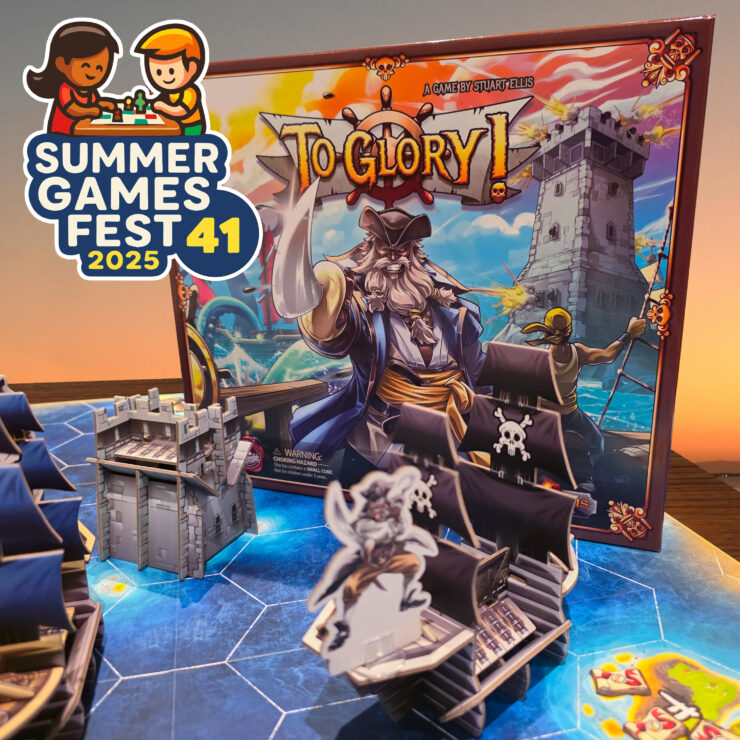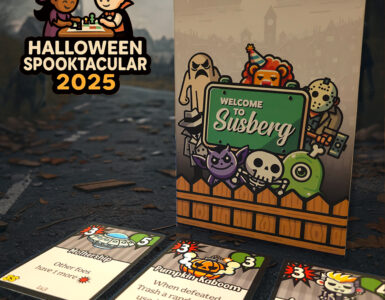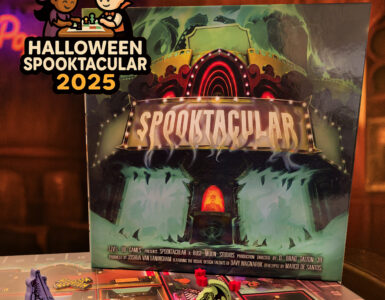Today we are looking at “To Glory!”, a pirate strategy and dexterity game from Vesuvius Media, makers of the Catapult/Jurassic Feud series, which both get plenty of play and regular recommendations here at Little Board Gamers.
“To Glory!” first caught my attention at the UK Games Expo, but I never managed to get a demo in. I didn’t want to cover it until I had actually played it, and now I finally have a copy. Outside of conventions, it isn’t the easiest game to find in the UK, but in my opinion it is well worth tracking down.
The first thing you notice when you open the box is the sheer table presence. The board is huge, and you construct the cardboard ships for each player along with the central tower and The Kraken. They look great, feel sturdy, and most importantly they all fit neatly back into the box at the end. That might sound like a given, but in board gaming it isn’t always the case.
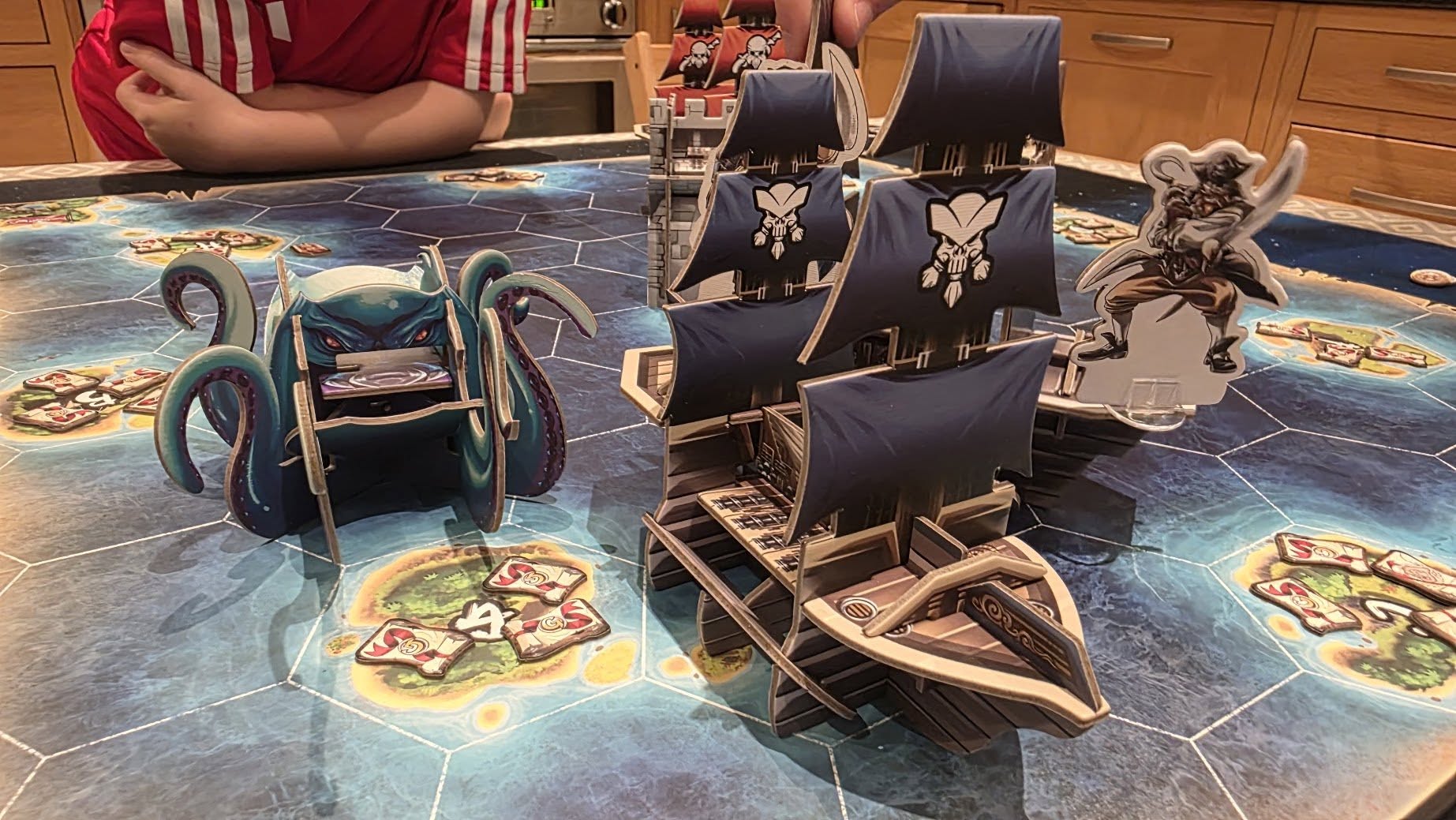
The aim of the game is to collect a set number of treasure chests while also gathering coins to boost your score and potentially sneak past another player in the rankings.
The board is laid out on a large hex grid. On your turn, you get five actions, plus your character’s special ability, and then you shoot.
Your five actions can be used to move forward, turn, pick up a map token, or use your ability. When you pick up a map token from an island, you look at it to see where you need to travel to cash it in for a treasure chest. Each chest is worth six gold, and in a three-player game the first player to collect three ends the game.
Map tokens can also reveal a Jolly Roger, which temporarily removes your player ability until you manage to hit someone with a cannonball. It is only a small inconvenience, but it can still derail a turn if you were relying on your ability.
You can also use your actions to move The Kraken or the central tower. The tower has incredible range, covering the entire board, while The Kraken is handy for both attacking and blocking players. You cannot end your turn on a hex adjacent to another object, so positioning can be used to stall opponents.
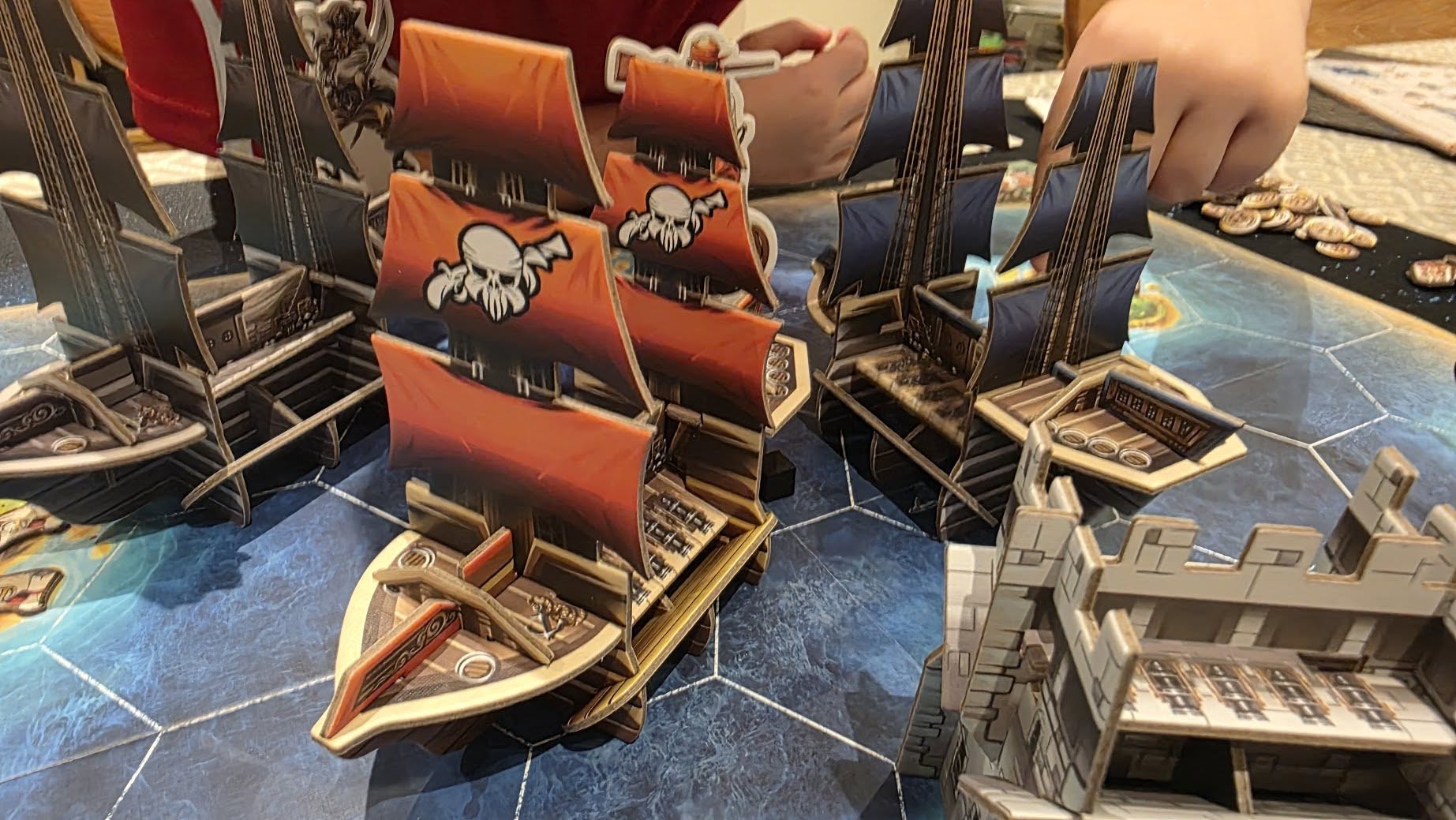
After your actions, it is time to shoot. You can fire from your ship, the tower, or The Kraken. Place three cubes into your chosen firing mechanism and flick them. Accuracy is not perfect, but this is cannon fire in a naval battle, it is not supposed to be. With a little practice you can get pretty good at judging distance.
Scoring from shooting is simple… you get1 point for hitting another ship, 2 points for landing on another ship, or 3 points for knocking the captain off the back. These points are purely for gold and do not damage the other player, but they can still swing the game. In one of our plays, Toby was ready to claim his final treasure but realised that if he did, Jack would win, so he delayed to get some extra points from naval battles instead.
The component quality is excellent, with thick card, detailed printing, and everything fitting in the box. While it is not the most available game in the UK, it is easy to import and widely available elsewhere. I suspect it will appear at future conventions and expos too.
It is not perfect. The biggest issue for us was that movement feels slightly counterintuitive. Ships travel along hexes in straight lines, but visually your brain wants to line them up with the hex edges, not the flat sides, which caused some confusion. Having all ships and structures on hexagonal bases would make alignment obvious and remove the possibility of accidental (or deliberate) misplacement.
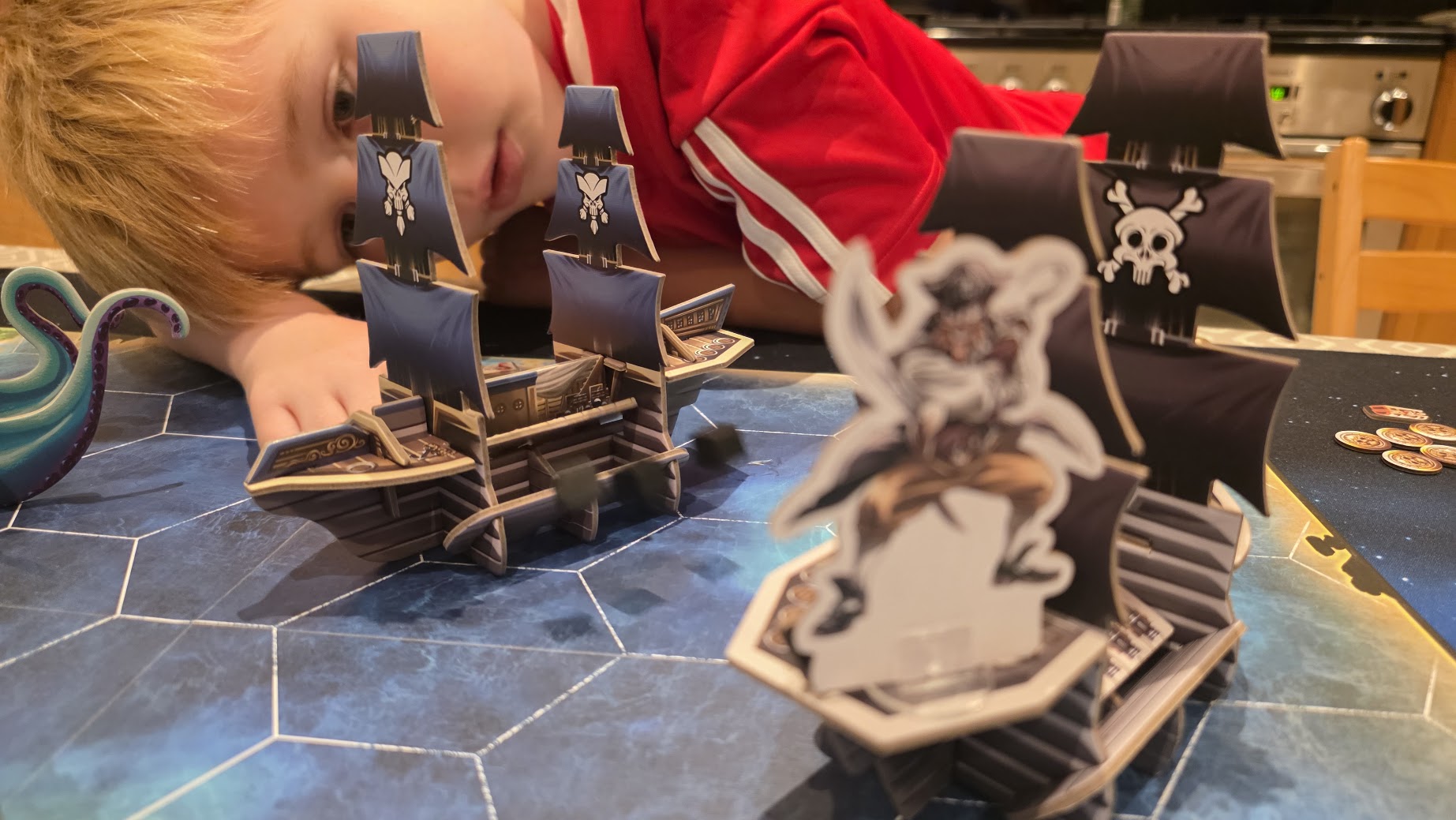
Secondly, some hero powers seem noticeably stronger than others. For example, moving your ship with two extra actions for free felt far more powerful than being able to move The Kraken for free, especially when travelling long distances.
Finally, while the game is not complex, the rulebook is not the best and left a few things unclear. It only took a couple of quick BoardGameGeek searches to resolve questions, but younger players trying to set up and play alone might struggle.
Despite a few niggles, I really like “To Glory!”. It is a rare mix of dexterity and strategy where both elements complement each other rather than one dominating. The game has fantastic table presence, is simple to grasp once you are past the rules, and is a lot of fun to play. Both boys walked into the kitchen when I was setting it up and instantly said, “Wow, this looks so cool.” Some games just benefit from that instant visual appeal, and this is one of them. It’s also very reasonably priced for how cool everything looks setup. It has already earned a place in our regular rotation.



